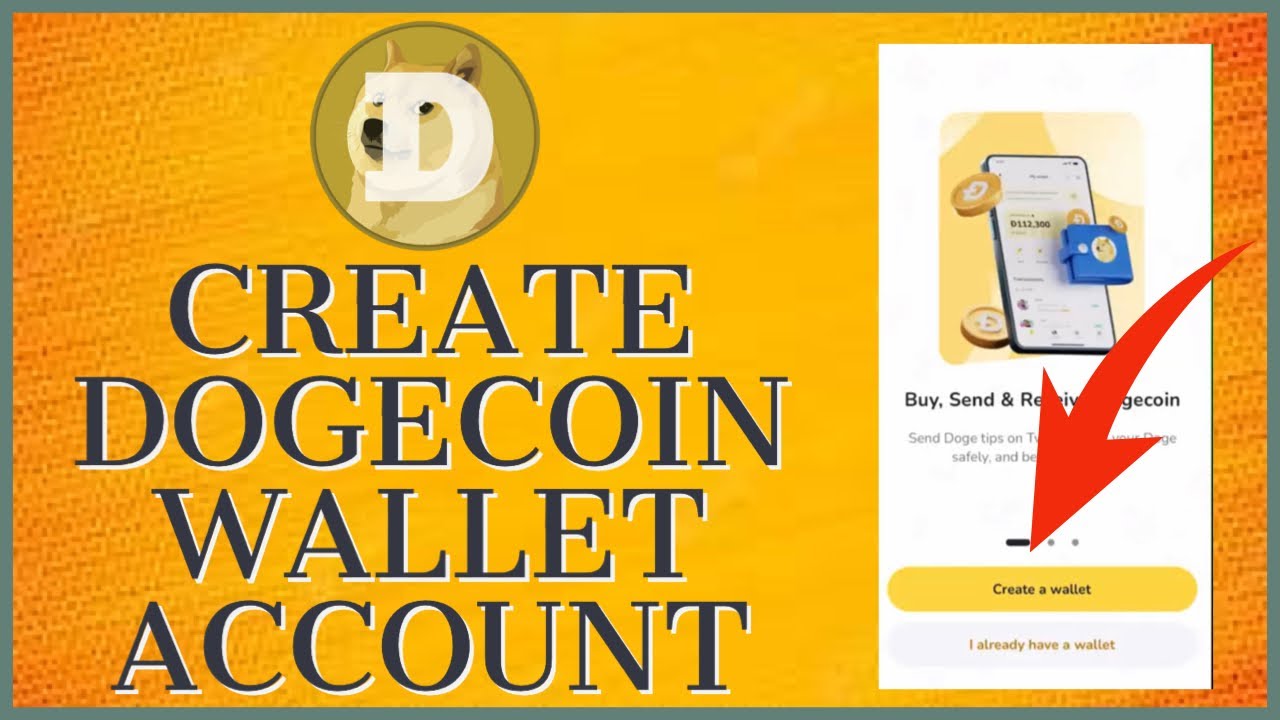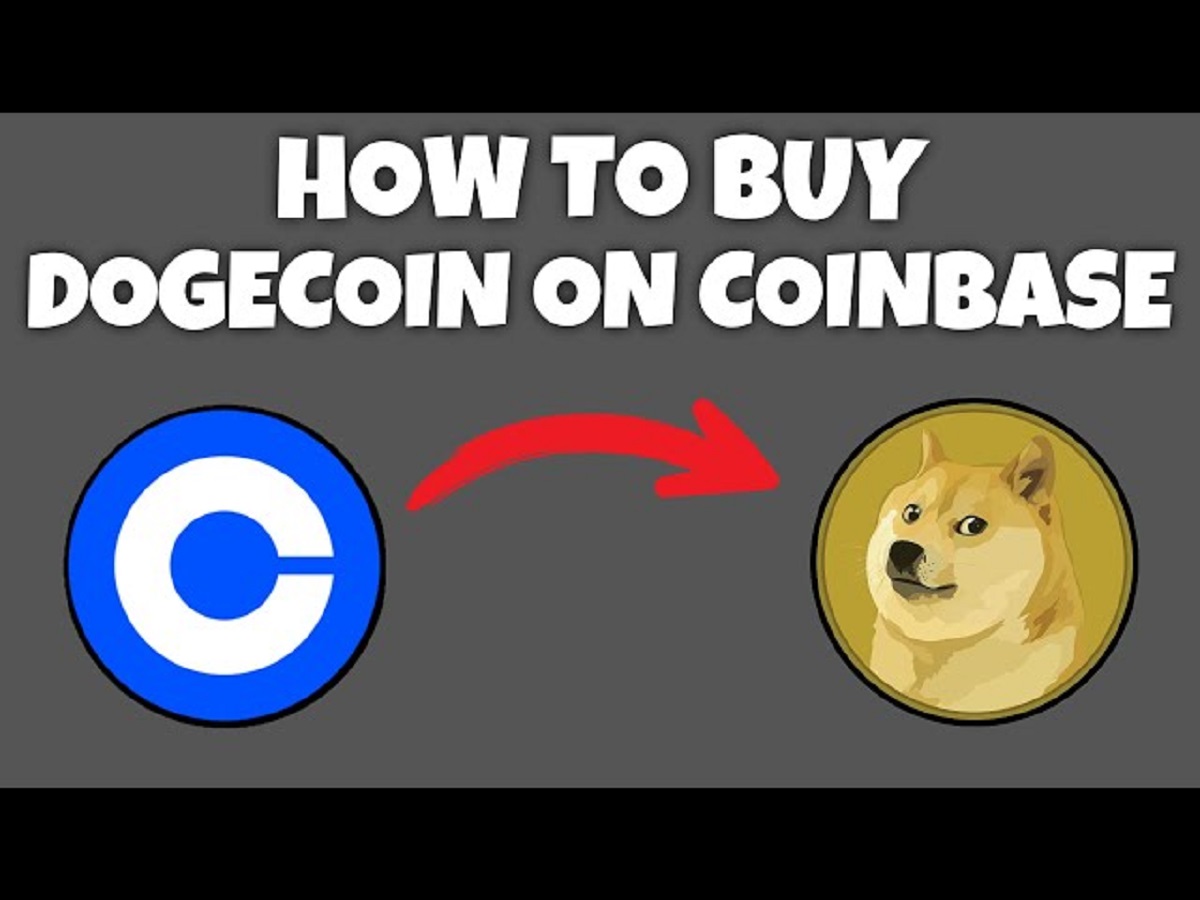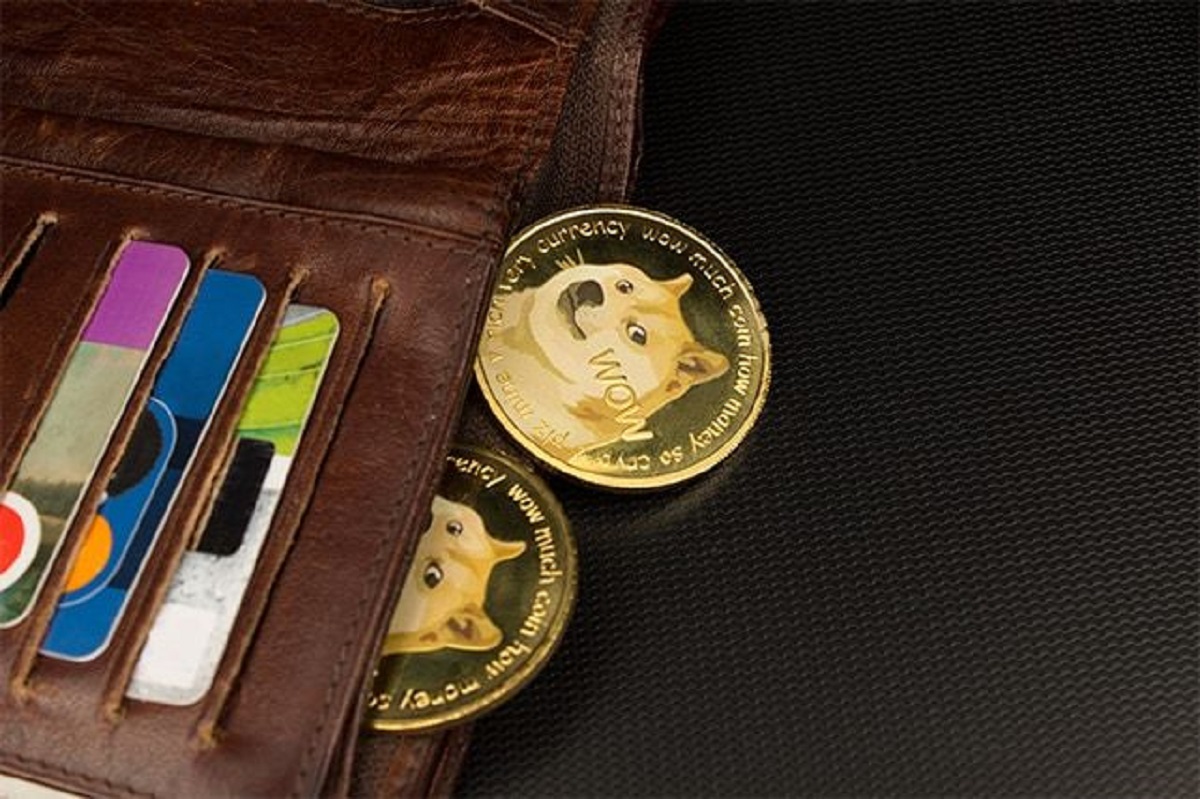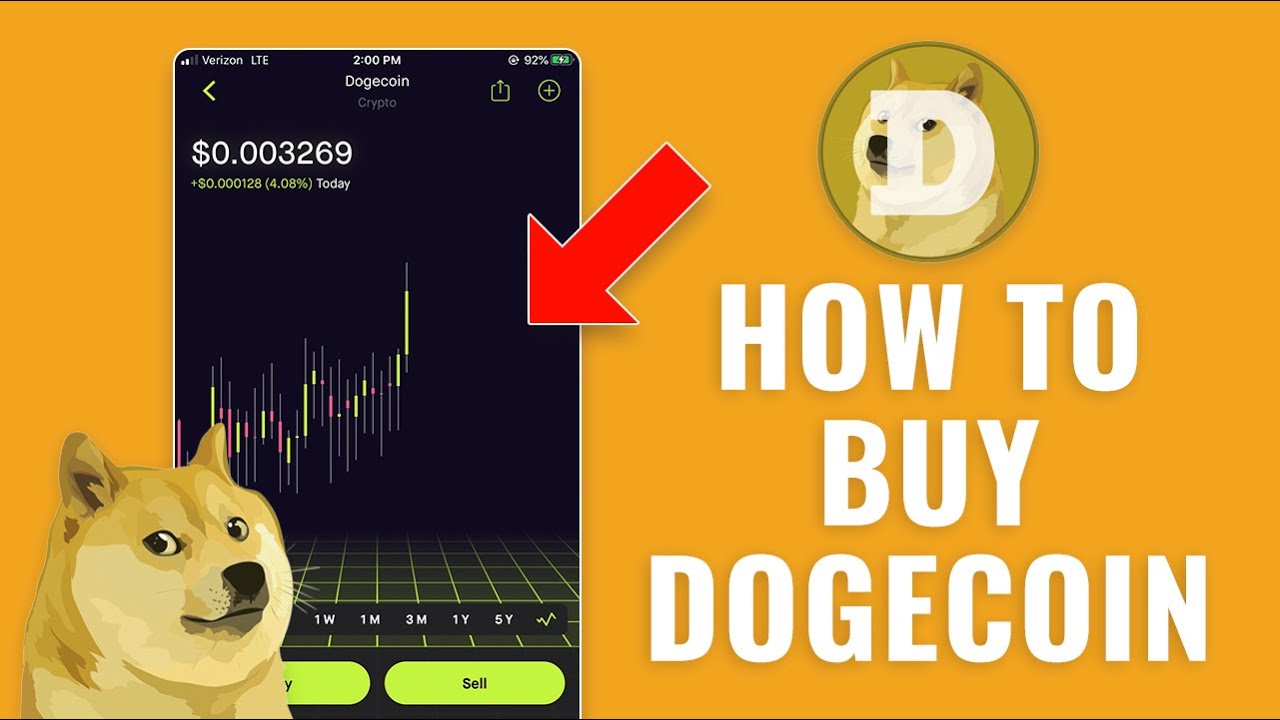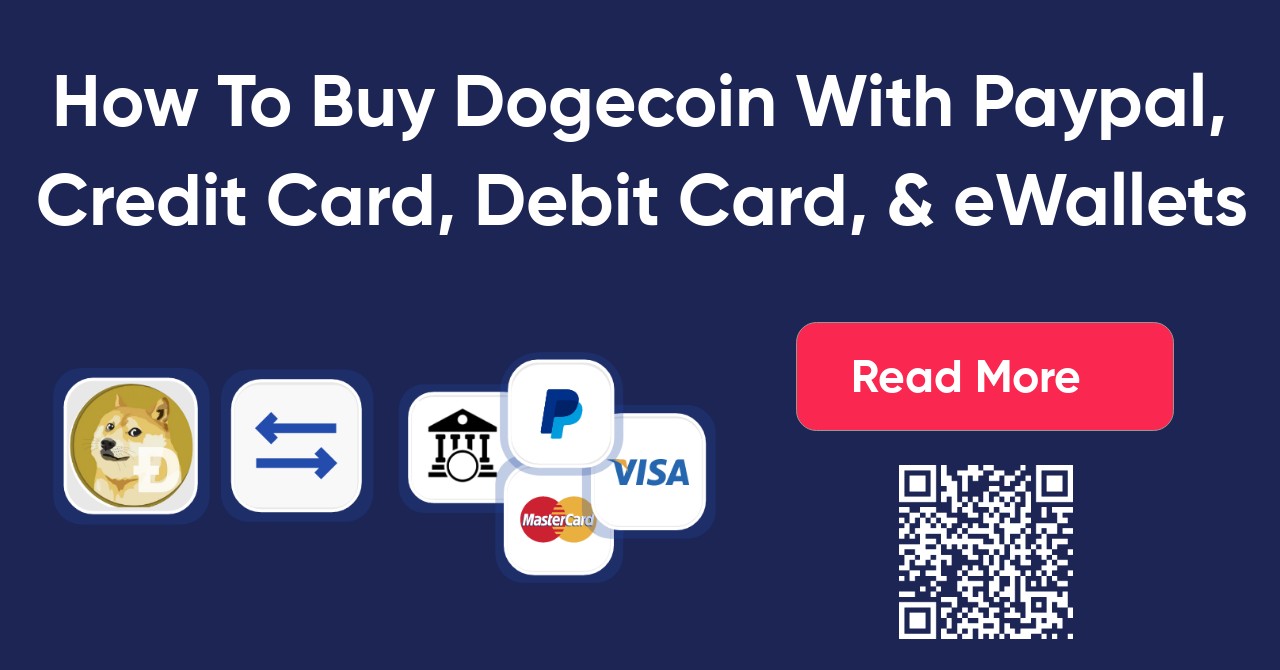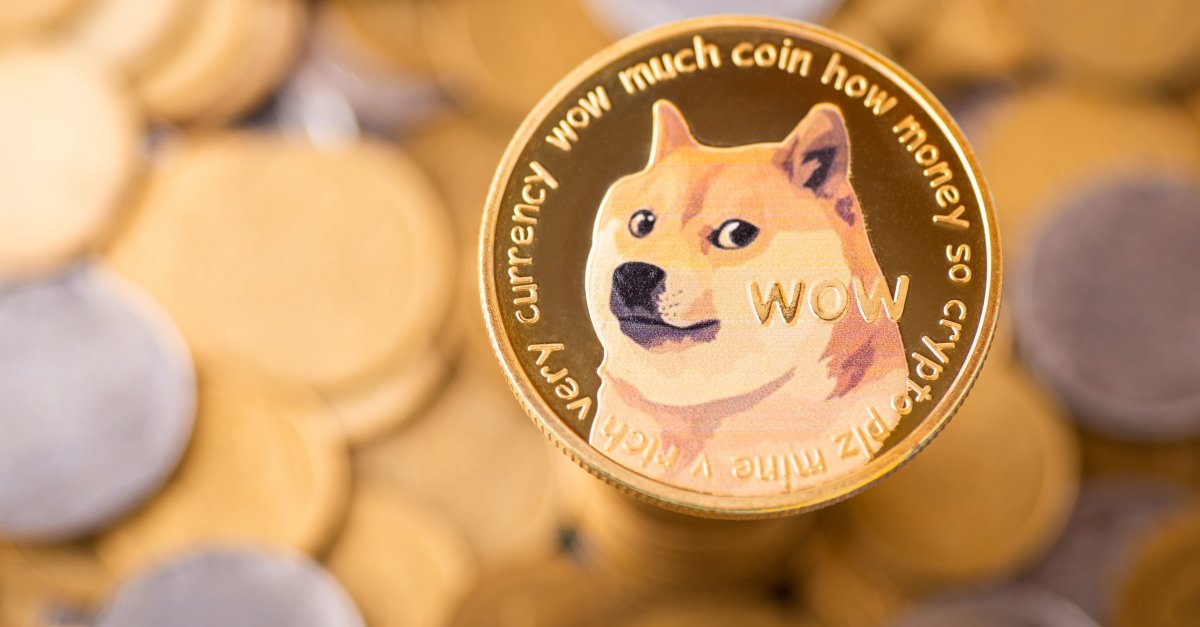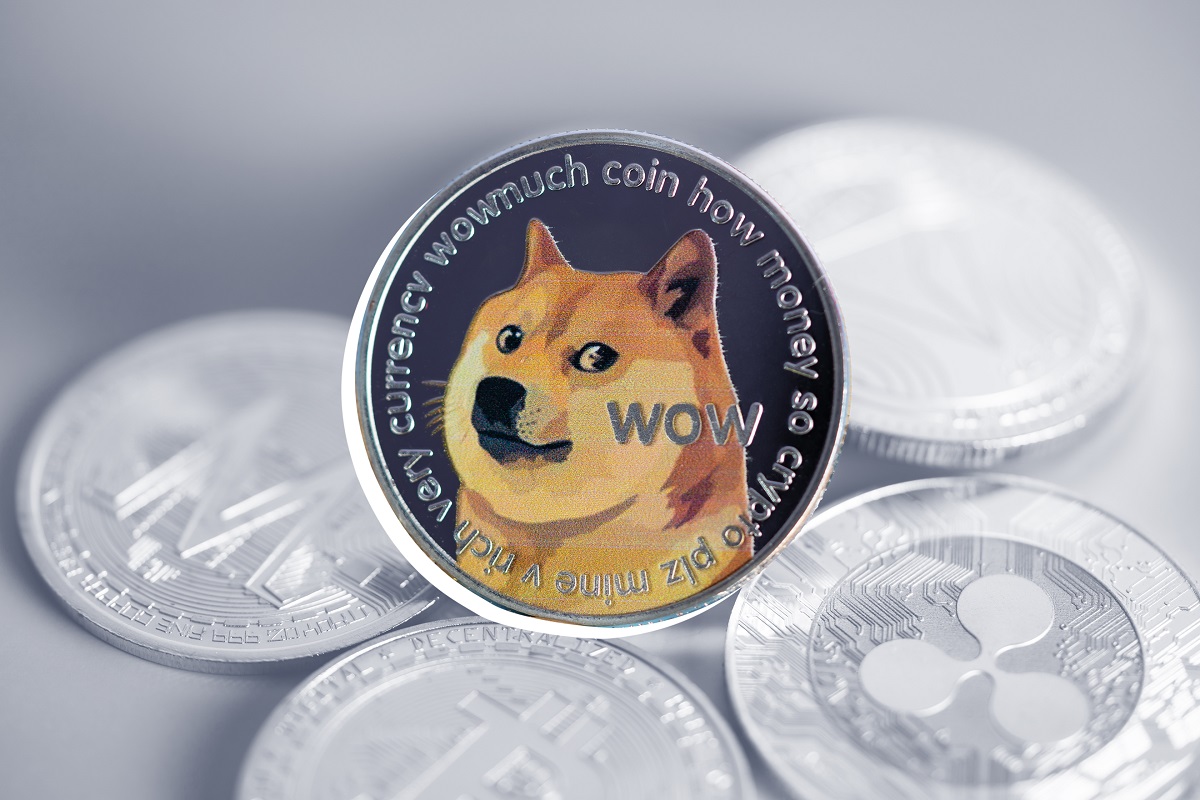Introduction
Welcome to this guide on how to create a Dogecoin wallet! If you’re new to the crypto world, rest assured – we’ll walk you through the process. Dogecoin, originally created as a meme cryptocurrency, has gained significant popularity due to its vibrant and welcoming community. With its cute Shiba Inu dog logo and lighthearted nature, Dogecoin has become a favorite among cryptocurrency enthusiasts.
So, what exactly is Dogecoin? It’s a decentralized digital currency that enables fast and low-cost transactions. While it started as a joke, it has evolved into a legitimate cryptocurrency with a dedicated following. If you’re considering getting into Dogecoin mining, trading, or simply holding the currency, setting up a Dogecoin wallet is the first step.
Why do you need a Dogecoin wallet? Simply put, a wallet allows you to store, send, and receive Dogecoin securely. It acts as your personal digital wallet, similar to a physical wallet that holds your cash. By having a Dogecoin wallet, you have full control over your funds without relying on third-party exchanges or platforms.
Choosing the right Dogecoin wallet is crucial. There are several types available, including desktop wallets, mobile wallets, web wallets, and hardware wallets. Each type has its pros and cons in terms of security, accessibility, and convenience. It’s important to consider your specific needs and preferences when making a choice.
In this guide, we will cover the process of setting up your Dogecoin wallet, creating a wallet address, implementing security measures, and handling incoming and outgoing transactions. By the end of this guide, you’ll have the knowledge and confidence to navigate the world of Dogecoin with ease.
What is Dogecoin?
Dogecoin, introduced in December 2013, is a cryptocurrency that was initially created as a joke or a meme based on the popular Shiba Inu dog meme. However, what started as a fun project quickly gained traction and became a fully functional cryptocurrency with a vibrant and active community.
Similar to other cryptocurrencies like Bitcoin and Litecoin, Dogecoin operates on a peer-to-peer network using blockchain technology. It provides a decentralized platform for users to send and receive digital currency securely and quickly.
One of the key aspects that sets Dogecoin apart from other cryptocurrencies is its lighthearted and inclusive nature. The community surrounding Dogecoin is known for its generosity and charitable acts, often raising funds for various causes and providing support in times of need.
From a technical perspective, Dogecoin is based on the Scrypt algorithm, which enables faster block generation compared to other cryptocurrencies. This makes Dogecoin transactions quicker and more efficient, making it an attractive option for micro-transactions.
Dogecoin’s supply is uncapped, meaning there is no limit to the number of Dogecoins that can be mined. Currently, there are over 130 billion Dogecoins in circulation, with new coins being created through mining as the network verifies transactions.
While Dogecoin was initially created as a joke, it has gained popularity and stability in the cryptocurrency market. Its friendly and welcoming community, coupled with its low transaction fees and fast block generation, make it an attractive option for both seasoned crypto enthusiasts and newcomers alike.
It’s important to note that although Dogecoin has gained recognition and has a dedicated following, it is still a relatively speculative investment. As with any investment, it’s crucial to research, understand the risks, and make informed decisions before diving into the Dogecoin market.
Why do you need a Dogecoin Wallet?
If you’re planning to use or invest in Dogecoin, having a Dogecoin wallet is essential. A wallet acts as a secure digital storage space for your Dogecoins, allowing you to send and receive funds without relying on third-party platforms or exchanges.
Here are a few reasons why you need a Dogecoin wallet:
1. Control over your funds: When you hold your Dogecoins in a wallet, you have full control over your funds. Unlike leaving your coins on an exchange, where you don’t have access to the private keys, having a wallet means you are the sole owner of your account. This gives you peace of mind knowing that you have complete control over your funds.
2. Security: Wallets provide a higher level of security compared to exchanges. While exchanges can be vulnerable to hacking attempts, wallets allow you to store your Dogecoins offline, reducing the risk of unauthorized access. By implementing proper security measures such as strong passwords and two-factor authentication, you can safeguard your coins against potential threats.
3. Convenience: With a Dogecoin wallet, you have the flexibility to access your funds at any time and from anywhere. You don’t have to rely on a centralized platform to manage your transactions or worry about downtime or technical issues on the exchange. Your wallet offers you the convenience of managing your finances on your own terms.
4. Privacy: When conducting transactions on an exchange, your personal information and transaction history may be stored and potentially accessible to others. By using a Dogecoin wallet, you can enjoy a higher level of privacy as your transactions are recorded on the blockchain anonymously. This ensures that your financial activity remains confidential.
5. Long-term storage: If you plan to hold onto your Dogecoins for a longer duration, a wallet is an ideal solution for secure storage. By storing your coins in a wallet, you reduce the risk of loss due to exchange hacks or platform shutdowns. Wallets provide a reliable and secure long-term storage solution for your Dogecoins.
Whether you’re looking to use Dogecoins for day-to-day transactions or as a long-term investment, having a Dogecoin wallet is crucial. It empowers you with control over your funds, enhances security, offers convenience, protects your privacy, and ensures the long-term safety of your Dogecoins.
Choosing the Right Dogecoin Wallet
When it comes to choosing a Dogecoin wallet, it’s important to consider factors such as security, accessibility, and convenience. There are several types of wallets available, each with its own advantages and disadvantages. Here are some wallet options to consider:
1. Desktop Wallets: Desktop wallets are software programs that you can install on your computer. They offer a high level of security as they are stored locally on your device. Examples of popular desktop wallets for Dogecoin include MultiDoge, Dogecoin Core, and Exodus. Desktop wallets are suitable for users who prioritize security and have a dedicated device for managing their cryptocurrencies.
2. Mobile Wallets: Mobile wallets are smartphone applications that allow you to store and manage your Dogecoins on the go. These wallets offer convenience and accessibility, making it easy to send and receive funds whenever you need to. Some popular mobile wallet options for Dogecoin include Coinomi, Jaxx Liberty, and Trust Wallet.
3. Web Wallets: Web wallets are online wallets that you can access from any internet-connected device. They offer convenience and ease of use since you can manage your Dogecoins without downloading any software. However, it’s important to choose a trusted and reputable web wallet to ensure the security of your funds. Examples of web wallets for Dogecoin include MyDogechain, Guarda Wallet, and HolyTransaction.
4. Hardware Wallets: Hardware wallets are physical devices that store your Dogecoins offline. They offer the highest level of security as they keep your private keys offline and protected from potential hacking attempts. Popular hardware wallet options for Dogecoin include Ledger Nano S and Trezor Model T. While hardware wallets are considered the most secure option, they come with a price tag.
When choosing a Dogecoin wallet, there are a few important factors to consider:
- Security: Look for wallets that offer features like strong encryption, two-factor authentication, and backup options to ensure the security of your funds.
- User-Friendliness: Consider wallets that have a user-friendly interface and intuitive features to make managing your Dogecoins hassle-free.
- Compatibility: Check if the wallet is compatible with your operating system or device to ensure seamless integration.
- Community Support: Look for wallets that have an active community and regular updates, as this indicates ongoing development and support.
It’s important to research and compare different wallet options before making a decision. Consider your specific needs, priorities, and level of experience in cryptocurrency management. By choosing the right Dogecoin wallet, you can ensure the security and convenience of your Dogecoin transactions.
Setting Up Your Dogecoin Wallet
Setting up a Dogecoin wallet is a straightforward process that can be done in a few simple steps. Here’s a guide to help you get started:
1. Choose the wallet type: Decide which type of wallet suits your needs – desktop, mobile, web, or hardware. Consider factors such as security, accessibility, and convenience.
2. Download or access the wallet: If you have chosen a desktop or mobile wallet, visit the official website or app store to download the wallet software. For web wallets, simply access the wallet’s website through a compatible browser. And, for hardware wallets, follow the manufacturer’s instructions for setup.
3. Install and launch the wallet: Once the wallet software is downloaded, follow the installation instructions provided. Launch the wallet after the installation is complete.
4. Create a new wallet: In most cases, you will be prompted to create a new wallet. This typically involves choosing a unique username, password, and recovery seed phrase. Make sure to choose a strong and secure password and write down your recovery seed phrase in a safe place.
5. Sync the wallet: Depending on the type of wallet you choose, it may need to sync with the Dogecoin network. This process ensures that your wallet is up to date and connected to the blockchain.
6. Encrypt and backup the wallet: To enhance security, consider encrypting your wallet with a password. Additionally, regularly backup your wallet files or write down your private keys. This ensures that you can recover your funds in case of wallet loss, device failure, or accidental deletion.
7. Test the wallet: Before making substantial transactions, it’s a good practice to send a small amount of Dogecoin to your new wallet to ensure it is working correctly. Send the funds to your wallet address and verify that they appear in your wallet balance.
8. Explore wallet features: Take the time to familiarize yourself with the various features offered by your chosen wallet. These may include transaction history, address book, QR code support, and integration with other services or exchanges.
Setting up your Dogecoin wallet is an important step in your journey towards using and managing Dogecoins. By following these steps and taking the necessary security measures, you can ensure the safety and accessibility of your digital funds.
Creating Your Wallet Address
Once you have set up your Dogecoin wallet, the next step is to create your wallet address. A wallet address is a unique identifier that allows you to receive Dogecoin into your wallet. Here’s how you can create your wallet address:
1. Open your Dogecoin wallet: Launch your Dogecoin wallet software or app and ensure that you are logged in and have access to your wallet’s user interface.
2. Navigate to receive funds: Look for the “Receive” or “Receive Funds” option in your wallet. It is usually located in the main menu or toolbar.
3. Generate a new address: Click on the “Generate New Address” button or similar option provided by your wallet. This will generate a new unique wallet address for you.
4. Copy or share the address: Once the wallet address is generated, you can copy it to your clipboard or share it with others. Most wallets provide a convenient copy button next to the address for easy copying.
5. Use the wallet address: Share your wallet address with the person or entity from whom you are expecting to receive Dogecoin. They can use this address to send funds directly to your wallet.
6. Verify received transactions: You can periodically check your wallet’s transaction history to verify if any incoming transactions have been made to your wallet address. The funds sent to your wallet address will appear in your wallet balance once the transaction has been confirmed by the Dogecoin network.
It’s important to note that wallet addresses are case-sensitive, so always double-check the address when sharing or entering it manually. Additionally, each wallet address is unique and should only be used for receiving Dogecoin. For each new transaction, it’s recommended to generate a new wallet address to enhance privacy and security.
Creating your wallet address is a simple and essential step in receiving Dogecoin. By having a unique wallet address, you can conveniently receive funds from others and keep track of all your incoming transactions within your wallet.
Security Measures for Dogecoin Wallets
Ensuring the security of your Dogecoin wallet is paramount to protect your funds. Here are some important security measures to consider:
1. Use a strong password: When setting up your Dogecoin wallet, choose a unique and strong password. Avoid using easily guessable passwords and consider using a combination of uppercase and lowercase letters, numbers, and special characters.
2. Enable two-factor authentication (2FA): Activate two-factor authentication on your wallet if it’s available. This adds an extra layer of security by requiring a second verification step, such as a one-time password or biometric authentication, in addition to your password.
3. Keep your wallet software updated: Regularly update your Dogecoin wallet software to ensure you have the latest security patches and bug fixes. Developers often release updates to address potential vulnerabilities, so staying up to date is essential.
4. Backup your wallet: Create regular backups of your Dogecoin wallet files or write down your recovery seed phrase. Store the backups in secure offline locations, such as encrypted USB drives or paper wallets. This protects your wallet from data loss due to device failure, theft, or accidental deletion.
5. Implement offline or cold storage: Consider using offline or cold storage options for long-term storage of your Dogecoins. Hardware wallets, such as Ledger or Trezor, provide an additional layer of security by keeping your private keys offline and away from potential online threats.
6. Be cautious with public Wi-Fi networks: Avoid using public Wi-Fi networks when accessing or making transactions using your Dogecoin wallet. Public networks can be insecure, and your sensitive information may be at risk of interception. If you need to access your wallet on the go, consider using a virtual private network (VPN) for added security.
7. Beware of phishing attempts: Be wary of phishing attempts or malicious websites pretending to be legitimate wallet providers. Double-check URLs and only download wallets from official websites or trusted sources. Avoid clicking on suspicious links and be cautious when sharing your wallet information online.
8. Keep your wallet private: Avoid sharing your wallet information, such as your wallet address or private keys, publicly or with untrusted sources. Keep this information confidential to minimize the risk of unauthorized access to your funds.
By implementing these security measures, you can significantly enhance the protection of your Dogecoin wallet. It’s crucial to remain vigilant, stay informed about potential threats, and continually educate yourself on best practices to keep your funds safe.
Receiving and Sending Dogecoin
Once you have set up your Dogecoin wallet and created a wallet address, you can start receiving and sending Dogecoin. Here’s how you can handle incoming and outgoing transactions:
Receiving Dogecoin:
1. Provide your wallet address: Share your Dogecoin wallet address with the person or entity from whom you are expecting to receive Dogecoin. You can give them your wallet address directly or use a QR code, which can be scanned by the sender.
2. Confirm incoming transactions: Once the sender has initiated the transaction, you will need to wait for the transaction to be confirmed on the Dogecoin network. This confirmation process ensures the validity of the transaction and typically takes a few minutes to complete.
3. Check your wallet balance: Once the transaction is confirmed, the received Dogecoins will appear in your wallet balance. You can verify the transaction by checking your wallet’s transaction history or balance summary.
Sending Dogecoin:
1. Locate the “Send” or “Send Funds” option: In your Dogecoin wallet, locate the option that allows you to send funds. This option is usually accessible from the main menu or toolbar.
2. Enter recipient’s wallet address: Provide the recipient’s Dogecoin wallet address carefully. Double-check the address to ensure accurate delivery of the funds. You can manually enter the address or use a QR code scanner to scan the recipient’s wallet address.
3. Enter the amount to send: Specify the amount of Dogecoin you want to send to the recipient. Take note of any transaction fees associated with the transfer, as these may vary depending on network congestion and wallet settings.
4. Review the transaction details: Before confirming the transaction, review the details to ensure accuracy. Pay special attention to the recipient’s wallet address, as sending funds to an incorrect address can result in permanent loss of funds.
5. Confirm and authorize the transaction: Once you are satisfied with the transaction details, confirm and authorize the transaction. This may require you to enter your wallet password or provide any additional security measures, such as two-factor authentication.
6. Wait for transaction confirmation: After the transaction is submitted, it will be broadcasted to the Dogecoin network for verification. You will need to wait for the transaction to be confirmed by the network, usually within a few minutes, before it is considered complete.
By understanding the process of receiving and sending Dogecoin, you can efficiently manage your cryptocurrency transactions. Remember to double-check wallet addresses, wait for transaction confirmations, and stay updated on wallet fees and network conditions to ensure smooth and secure transactions.
Backing Up Your Dogecoin Wallet
Backing up your Dogecoin wallet is an essential step in protecting your funds and ensuring that you can recover your wallet in case of loss or damage. Here’s how you can back up your Dogecoin wallet:
1. Identify the wallet backup method: Different wallet types may have different backup methods. Look for the backup or export option within your wallet software or app. This may be located in the settings or preferences section.
2. Choose a backup location: Decide where you want to store your wallet backup. It’s crucial to choose a secure and reliable location, preferably offline. Options include external hard drives, encrypted USB drives, or even paper wallets.
3. Follow the backup process: Depending on your wallet, the backup process may involve exporting your wallet files or writing down your recovery seed phrase. If exporting wallet files, save them in the designated backup location. If using a recovery seed phrase, write it down accurately and keep it in a secure place.
4. Encrypt your backup: If you are storing your wallet backup digitally, consider encrypting it with a strong password. This adds an extra layer of protection and prevents unauthorized access to your backup file.
5. Test your backup: To ensure that your backup is functional and accurate, perform a test restore. Use the backup files or recovery seed phrase to restore your wallet on a separate device or a different wallet software implementation. This allows you to confirm that you can indeed access your wallet and funds using the backup.
6. Regularly update your backup: As you continue to use your Dogecoin wallet and generate new addresses, it’s important to update your backup regularly. Consider creating a backup schedule, especially after making significant changes or additions to your wallet.
7. Store your backup securely: Once you have created and tested your backup, store it securely. Keep your backup files or written recovery seed phrase in a safe place, away from potential physical damage, theft, or unauthorized access.
By following these steps, you can ensure that your Dogecoin wallet is properly backed up, safeguarding your funds and allowing for easy recovery in case of any unforeseen circumstances. Remember, losing access to your wallet without a backup may result in permanent loss of your Dogecoins, so take the time to back up your wallet regularly.
Frequently Asked Questions
Here are answers to some common questions about Dogecoin wallets:
1. Can I have multiple Dogecoin wallets?
Yes, you can have multiple Dogecoin wallets. Each wallet will have its own unique addresses and balances, allowing you to organize your funds or separate personal and business transactions.
2. Can I use the same wallet address multiple times?
While it is technically possible to use the same wallet address multiple times, it is generally recommended to generate a new address for each transaction. Using unique addresses enhances privacy and security by making it harder to trace your transactions.
3. What happens if I lose my wallet or forget my password?
If you lose your wallet files or forget your password, you may lose access to your Dogecoins permanently. It is important to keep backups of your wallet files or recovery seed phrase in a secure location to prevent such situations.
4. Can I recover my wallet on a different device?
Yes, you can recover your Dogecoin wallet on a different device using the wallet files or recovery seed phrase. This allows you to access your wallet and funds from a different computer or mobile device.
5. Do I need an internet connection to access my Dogecoin wallet?
To check your wallet balance and transaction history, you will need an internet connection. However, some wallets also offer offline or cold storage options, allowing you to generate and sign transactions without being connected to the internet.
6. Are Dogecoin wallets secure?
Dogecoin wallets can offer a high level of security if used correctly. It is crucial to choose reputable wallet providers, enable security features like strong passwords and two-factor authentication, and keep your wallet software updated to protect your funds.
7. Can I store Dogecoin on an exchange instead of a wallet?
While exchanges offer wallet services, it is generally not recommended to store your Dogecoin on an exchange for long periods. Exchanges can be vulnerable to hacking attempts, and you have limited control over your funds. It’s considered safer to store your Dogecoins in a wallet where you have full control of your private keys.
8. Are Dogecoin transactions reversible?
No, Dogecoin transactions are not reversible once they are confirmed on the blockchain. It is important to double-check transaction details, especially the recipient’s wallet address, before sending any Dogecoins to prevent irreversible mistakes.
These are just a few frequently asked questions about Dogecoin wallets. If you have more specific queries or concerns, it is recommended to refer to the wallet provider’s documentation or seek assistance from the respective support channels.
Conclusion
Congratulations! You have reached the end of this guide on how to create and manage a Dogecoin wallet. By following the steps outlined in this guide, you should now have a better understanding of what Dogecoin is, why a wallet is necessary, how to choose the right wallet, and the process of setting up, securing, and using your Dogecoin wallet.
Having a Dogecoin wallet empowers you with control over your funds, enhances security, and allows you to participate in the exciting world of cryptocurrency. Whether you’re sending or receiving Dogecoin for transactions or investments, a wallet is a crucial tool for managing your digital assets.
Remember to always prioritize security by using strong passwords, enabling two-factor authentication, regularly backing up your wallet, and staying vigilant against potential scams or phishing attempts. By taking these precautions, you can safeguard your Dogecoins and ensure a smooth and secure experience.
As you explore the world of Dogecoin, continue to educate yourself and stay informed about updates and developments in the cryptocurrency space. Dogecoin, with its fun and inclusive community, offers a unique and exciting way to engage with digital currency.
Lastly, please note that cryptocurrency investments come with inherent risks. It’s important to conduct thorough research, consult with financial advisors if necessary, and only invest what you can afford to lose.
With the knowledge and skills gained from this guide, you are now ready to dive into the world of Dogecoin with confidence. Happy Dogecoin wallet creation and may your Dogecoins bring you much joy and prosperity!







